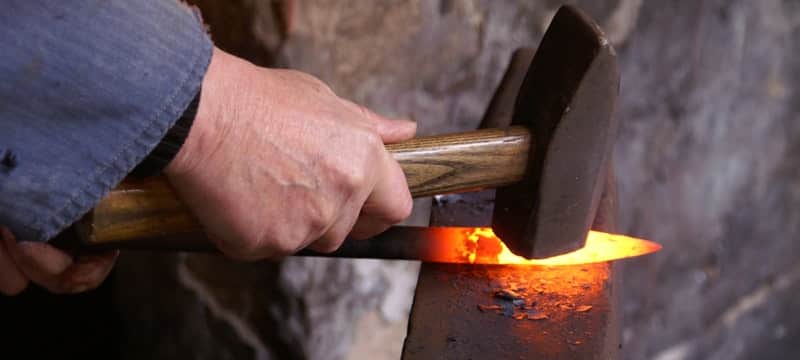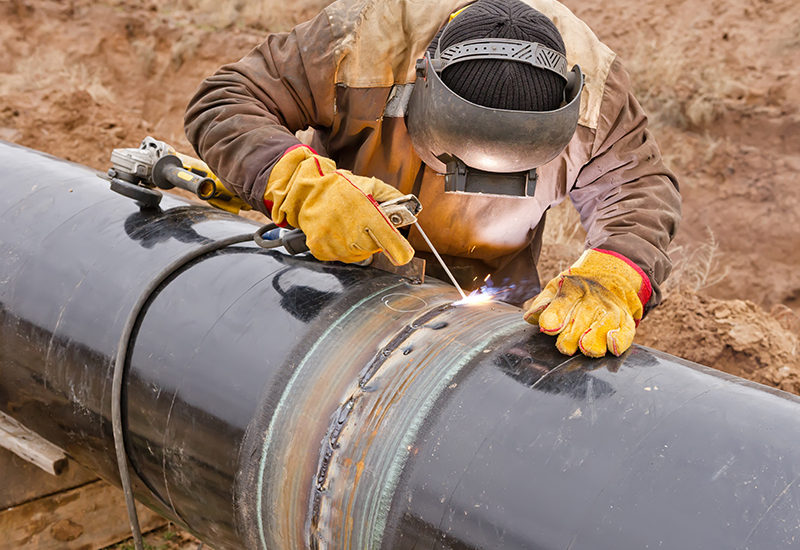Every industry must respect workplace safety, and metalworking is no exception. Welding creates fumes that are very dangerous when inhaled, and metalworkers deal with extremely hot metal and dangerous equipment on a daily basis. Welding safety begins with a thorough understanding of what could go wrong and how to be prepared if something happens. Risks include inhalation of toxic fumes, eye or face injury, skin burns, and electric shock.
Here are several ways to develop a safety plan for your welding business. The safety tips we share here are not meant to substitute for official safety documentation, so ensure your business conforms to all safety requirements.
Proper Air Flow
Ventilation is essential while welding. Welding fumes lead to eye, nose, and throat irritation and may cause dizziness and nausea. Long-term exposure can lead to serious illness, including lung damage, cancer, stomach ulcers, and damage to the kidneys and nervous system. The fumes produced by certain metals contain manganese, helium, argon, and carbon dioxide. These gases are hazardous when welding in an enclosed area because they displace oxygen and may lead to suffocation.
Respirators
High-quality respirators are worth every penny spent on them. Some connect directly to the welding helmet, providing long-term wearability and comfort. Other equipment may be used with any type of helmet and welding gear. Your metalworking gear should fit comfortably yet snugly to offer the most effective coverage.
Metal Cleaners
Always know what you’re working with regarding chemicals and metal cleaners. Certain chemical reactions can create toxic gases during the welding process. To prevent the production of toxic fumes while working, take the time to use sandpaper, a grinder, or a safe cleaning solution to remove other chemicals from the metal before you begin welding.
Personal Protective Equipment (PPE)
The primary focus should be the protection of the metalworker. Several types of PPE are on the market, and each should be examined and carefully considered. Choose protective clothing that meets the individual needs of the metalworker and all OSHA requirements as well.
Eye and Face Protection
Helmets, hand shields, goggles, and safety glasses are acceptable eye and face protection in various settings. Any combination of these may be worn simultaneously to better protect the welder. Filter lenses and plates must meet the criteria for transmission of radiant energy.
Welding Helmets with Filter Plates
These are designed to protect welders from arc rays and weld sparks or splatters that strike the helmet. They do not always protect against slag chips, grinding fragments, wire wheel bristles, or similar hazards. You must also wear goggles or some other appropriate eyewear (eyewear) to ensure that your eyes are adequately protected.
OSHA requires metalworkers to use helmets or hand shields with filter lenses and cover plates when arc cutting and arc welding with an open arc. Anyone standing nearby or observing the job must also wear safety glasses with at least a shade of two lenses to protect their eyes.
Auto Darkening Helmet vs. Standard Flip Helmet
The standard flip helmet is designed to protect the eyes with a very dark-tinted #10 shade and ultraviolet and infrared coatings. A quick nod of the welder’s head closes the helmet to protect his eyes and face, and when he’s ready to examine his work, he simply lifts the helmet. The primary issue with the standard flip helmet for welding is that it’s very tiring and causes neck discomfort.
Auto-darkening helmets are based on technology similar to prescription glasses, which automatically darken when the wearer steps outside into bright sunshine. They are designed to darken automatically to a dark shade (generally #9 to #13) to protect the wearer’s eyes and return to transparency. The change happens very quickly, so the wearer can work more efficiently.
While there are many arguments in favor of and against the standard flip helmet and auto-darkening helmet, both are very valuable pieces of PPE. The wearer should have the final say as to which piece of equipment they would instead use based on their personal preference.
Welding Sleeves or Jacket
Both welding sleeves and jackets provide an additional layer of protection against serious injury while welding. Personal preference plays a small part here, but specific jobs may require a coat for full coverage.
Protective Clothing
The clothing you wear when working with metal should fully cover your skin to prevent burns from the sparks. Protective clothing also protects against ultraviolet and infrared ray flash burns while working. Dark clothing is best because it reduces the glare you may experience under the face shield. Avoid clothing made from materials that may melt and stick to your skin if it comes into contact with the sparks while working.
When choosing welding gear and personal protection equipment, you should thoroughly research your choices. Fire-resistant materials are becoming increasingly popular due to their versatility. We don’t believe leather is completely being removed from the equation because it is so very useful for many metalworking jobs.





3 Comments
jresquival
February 7, 2017 at 4:29 pmThat’s a good tip to maintain airflow when welding. That way you’ll be able to disperse the gases that welding uses. I’m building a new home and I was thinking about getting a welder to install metal handrails for me. Are there any tips that are specific to a residential scenario?
Acme Tools
February 7, 2017 at 4:42 pmHello, Thank you for your comment and question. We do not have any tips that are specific to a residential setting but due to the materials in residential building being more flammable than a typical commercial job site, you must pay closer attention to any stray sparks or splatter that could cause a fire.
Thank you,
Acme Tools
Ellie Davis
March 13, 2019 at 5:40 pmI didn’t know that ventilation was important when it came to welding. This seems like something that welders should consider when they are getting safety equipment. Hopefully, any welder makes sure they have the best safety equipment possible.